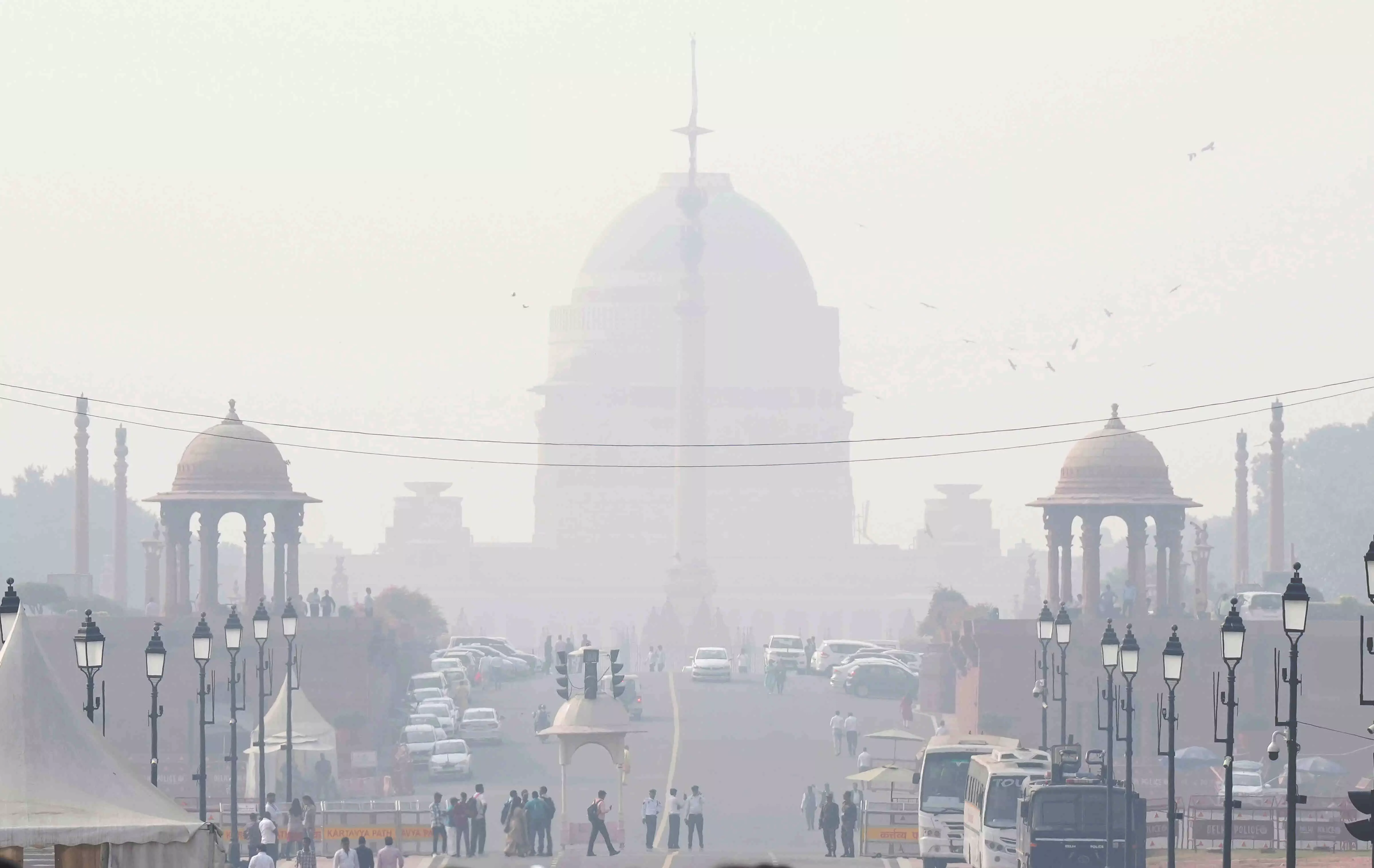Dare to breathe?
As the air in Delhi NCR turns toxic, it’s annual déjà vu all over again

Remember a time when air-conditioners were not a necessity? When just speeding up the fan sufficed? Increasing global temperatures, largely man-made, ensured that the machine that was once considered a mark of affluence or corporate life, has become a necessity today. Yes Gen Z, such a time did exist. There was also a time when air purifiers seemed a futuristic invention. The prophecies of the air purifier companies have been proved correct and today, in cities such as Delhi and Gurgaon, it’s impossible to survive without one.
Well, impossible to survive may be a hyperbole, but it’s not a completely outlandish claim. For example, in the last few days, Delhi pollution has upped 100x the WHO (World Health Organisation) limit with air quality index (AQI) hitting a dangerous 500 mark, and now hovering under the 400 mark; obviously readying to shoot up on Sunday and Monday post-Diwali. Pollution gravely affects the elderly, the children, pregnant women, and those with pre-existing illnesses. Long-term effects of air pollution include heart disease, lung cancer, and respiratory problems, damage to nerves, brain, kidneys, liver, and other organs. As per reports, some scientists believe that air pollutants can also lead to birth defects.
The University of Chicago’s Energy Policy Institute in August this year, indicated air pollution as the world’s top threat to public health, causing a reduction in average life expectancy by 2.3 years across the world. It also noted that China, which had the distinction of being the most polluted country, had between 2013 and 2021 improved its air quality by 40 per cent that bestowed two additional years of life to its citizens. The report also said that India, Bangladesh, Nepal and Pakistan made up for “more than half of the total years of life lost globally due to pollution” in the same period. The report also noted with concern that India alone was responsible for nearly 60 per cent of the growth in air pollution across the globe during that time. If India met WHO guidelines for particulate pollution, Delhi’s expectancy would be enhanced by 12 years!
And yet, the same scene unfolds every year. Vehicular pollution, construction debris, stubble burning in neighbouring Punjab and Haryana, winter chill and fog, enthusiastic Diwali celebrations with fireworks — and lo and behold, the citizens of Delhi, Gurgaon, and surrounding areas are gasping for breath. I have lived through the pain, ill-health, scratchy throats, headaches, and watering eyes, caused by continued exposure to polluted air. While I crib about Bangalore traffic, I’ll give an arm and leg to avoid Delhi/Gurgaon around Diwali. And while there still needs to be greater adoption of green Diwali, the festival is hardly the biggest cause for the harmful air.
Things just don’t seem to change and every year, the air pollution, exacerbated in the cold months, is the same as ever. Earlier this week, the Supreme Court clarified that firecrackers containing barium and other harmful chemicals were not permitted across the nation, and that the ban was not restricted to Delhi NCR. In recent years, the apex court has been urging citizens to use green crackers. A more resolute approach will be needed from public and private players, including us as citizens, to ensure that we tackle the building up of corrosive air. Meanwhile, ingenious ideas such as IIT Kanpur’s groundbreaking innovation of inducing artificial rain through cloud seeding, provide temporary respite. Increased awareness and genuine desire to combat the ill-effects of pollution will be the sustainable recourse.
Air pollution also gravely impacts a country’s growth wherein it leads to depleted labour productivity and less consumer spends. According to a World Bank report, rising air pollution has been reducing our GDP (gross domestic product) by 0.56 per cent every year. Another study, done by global consulting firm Dalberg Advisors along with the Clean Air Fund (CAF) and the Confederation of Indian Industry (CII), states that air pollution costs India Inc. almost USD 95 billion (Rs 7 lakh crores), or about 3.3 per cent of total GDP, every year. The study deduces that “the cost is equal to 50 per cent of all tax collected annually, or 150 per cent of India’s healthcare budget” — a huge cost indeed! Therefore, if longer life span and better health doesn’t entice a growth-driven nation, perhaps the loss of GDP will.
The writer is an author and media entrepreneur. Views expressed are personal



